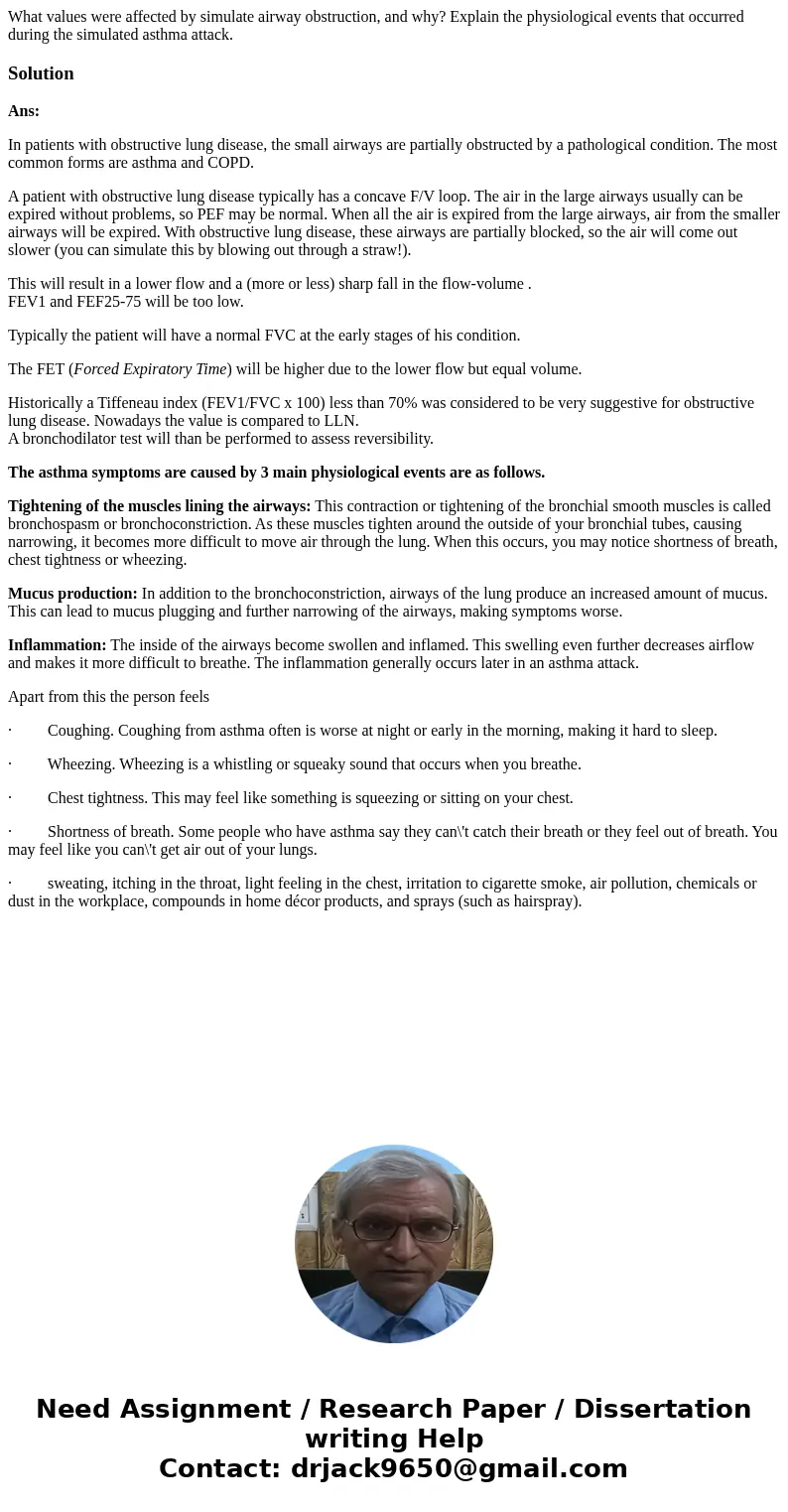What values were affected by simulate airway obstruction and
Solution
Ans:
In patients with obstructive lung disease, the small airways are partially obstructed by a pathological condition. The most common forms are asthma and COPD.
A patient with obstructive lung disease typically has a concave F/V loop. The air in the large airways usually can be expired without problems, so PEF may be normal. When all the air is expired from the large airways, air from the smaller airways will be expired. With obstructive lung disease, these airways are partially blocked, so the air will come out slower (you can simulate this by blowing out through a straw!).
This will result in a lower flow and a (more or less) sharp fall in the flow-volume .
FEV1 and FEF25-75 will be too low.
Typically the patient will have a normal FVC at the early stages of his condition.
The FET (Forced Expiratory Time) will be higher due to the lower flow but equal volume.
Historically a Tiffeneau index (FEV1/FVC x 100) less than 70% was considered to be very suggestive for obstructive lung disease. Nowadays the value is compared to LLN.
A bronchodilator test will than be performed to assess reversibility.
The asthma symptoms are caused by 3 main physiological events are as follows.
Tightening of the muscles lining the airways: This contraction or tightening of the bronchial smooth muscles is called bronchospasm or bronchoconstriction. As these muscles tighten around the outside of your bronchial tubes, causing narrowing, it becomes more difficult to move air through the lung. When this occurs, you may notice shortness of breath, chest tightness or wheezing.
Mucus production: In addition to the bronchoconstriction, airways of the lung produce an increased amount of mucus. This can lead to mucus plugging and further narrowing of the airways, making symptoms worse.
Inflammation: The inside of the airways become swollen and inflamed. This swelling even further decreases airflow and makes it more difficult to breathe. The inflammation generally occurs later in an asthma attack.
Apart from this the person feels
· Coughing. Coughing from asthma often is worse at night or early in the morning, making it hard to sleep.
· Wheezing. Wheezing is a whistling or squeaky sound that occurs when you breathe.
· Chest tightness. This may feel like something is squeezing or sitting on your chest.
· Shortness of breath. Some people who have asthma say they can\'t catch their breath or they feel out of breath. You may feel like you can\'t get air out of your lungs.
· sweating, itching in the throat, light feeling in the chest, irritation to cigarette smoke, air pollution, chemicals or dust in the workplace, compounds in home décor products, and sprays (such as hairspray).

 Homework Sourse
Homework Sourse